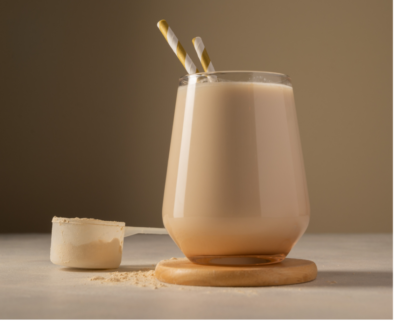What is Cholesterol
What is Cholesterol?
- A steroid (group of chemical substances) made by the liver and found in animal fats as well as in most body tissues
- Component of cell membranes
- Raw material for synthesis of Vitamin D
- Steroid hormones
- Bile salts: made by the liver, aid in fat digestion and absorption, keep cholesterol dissolved for excretion (or else we have painful gall stones).
What are dietary sources of cholesterol?
Egg yolks, meats, organ meats, shellfish, and milk products.
How much fat and saturated fat should I have in a day?
The American Heart Association suggests 30% or less of total daily calories from fat and 10% or less of total daily calories from saturated fats.
Remember 1 gram of fat contains 9 calories — more than double the calorie content of 1 gram of protein or 1 gram of carbohydrates (4 calories each).
What are lipoproteins (LDL & HLD)?
Lipoproteins transport cholesterol (and triglycerides) in the body:
- LDL (low density lipoproteins) have more fat than protein and deliver cholesterol to peripheral (non-liver) tissue for cells to make membranes or hormones, and to store the excess.
- HDL (high density lipoproteins) have more protein than fat and their job is to transport the stored cholesterol from the periphery back to the liver where it is broken down into bile salts (which are used to digest and absorb fat). This is the only way to remove cholesterol from the body as it is not broken down and used for energy. *Think ‘H’ for HEALTHY*
What are acceptable Blood Cholesterol Levels?
- Total Blood Cholesterol: below 200 mg/dL
- LDL 70-100 mg/dL (or less)
- HDL between 40-60 mg/dL (and higher)
How do I lower my cholesterol?
Talk to your doctor first. Get your levels checked.
Even when dietary intake of cholesterol is high, our liver continues to make 85% of cholesterol found in the body. It is not enough to simply cut out dietary sources of cholesterol. We must also increase intake of unsaturated (mono and poly) fats.
Polyunsaturated Omega-3’s (ALA, EPA, DHA) fats lower cholesterol, help prevent blood clots, and lower blood pressure. Sources include salmon (EPA and DHA) and Flax, hemp, and chia seeds (ALA), fish oil and vegetarian Algae oil supplements. Omega-3 EFA’s help produce Anti-inflammatory prostaglandins 1 & 3 in the body. Some people may be able to convert plant-based ALA to EPA and DHA.
Monounsaturated fat or Omega-9’s (Oleic) considered non-essential as these are made by the body. Also found in olive oil, nuts (macadamia, almonds, pecans, cashews, pistachios), and avocados.
Polyunsaturated Omega-6’s (LA, GLA) are found in vegetable oil like corn, safflower, canola, and soybean and help produce Inflammatory prostaglandins 2 in the body. The ratio of Omega 6 to Omega 3 should be 1:1 or 2:1. However, Americans are typically at 20:1.
FYI: “Good” saturated fats come from coconut and coconut oil. These are medium chain triglycerides that are more likely to be used for energy rather than stored by the body. These helps raise HDL and decrease risk of CV disease.
Other dietary additions:
Pomegranate: helps lower LDL and protect against heart disease and diabetes.
Gogi berries: may help reduce total cholesterol
Cinnamon: lowers LDL cholesterol
Turmeric, garlic: lower cholesterol
Soluble fiber: fruits, vegetables, beans, and grains (like oats) help lower cholesterol.
Alcohol: in moderation can raise HDL
Green Tea: helps lower LDL
Walnuts and Almonds: best nuts for lowering cholesterol
More Info:
Smoking and stress lower HEALTHY HDL levels. So stop smoking now and manage your stress with lifestyle changes, exercise, massage, yoga, meditation, etc.
Regular aerobic exercise lowers LDL’s and increases HEALTHY HDL’s.
Trans fats have an even worse effect on blood cholesterol levels than saturated fats and should be avoided.
Arthrosclerosis: (thickening of artery walls leading to high blood pressure) indirectly causes half of the deaths in the western world. It’s most common in aorta, coronary, and carotid arteries. Plaque formation increases the risk of heart attack, stroke, and aneurysms. It’s responsible for the pain (angina) when the heart is ischemic (tissue starved of blood). Risk factors include increasing age, male sex, family history, high blood cholesterol, hypertension, smoking, lack of exercise, diabetes, obesity, stress, and intake of trans fats.
Alicia Cross is a Certified Personal Trainer, Wellness Coach, and Yoga Instructor with more than 15 years’ experience working with clients in classes and one-on-one. She is a yogi, meditator, vegan, and lifter of heavy things. If you’re ready to discover the strength and peace that comes from within, email Alicia@AliciaCrossTraining.com.
Related Posts:
Fix Your Nutrition in 10 Steps



